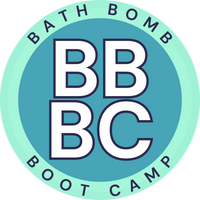What is Superfatting?
Superfatting is a technique often referred to in soap making but rarely explained and often misunderstood. Superfatting is sometimes also referred to as a lye discount since it involves increasing the oils or butters in your soap but keeping the lye amount the same. It can also refer to using the same amount of oils, but adding less lye. As an example, if your recipe calls for 9 ounces of lye and you only add 8.5, this would be called 5% superfatting, since you will have 5% extra oil in your mixture.
Superfatting is done for two reasons. The first is that extra oils add more moisturizing qualities to your soap (sometimes referred to as emollients). The second is that the common 5% superfatting allows you to a bit more leeway with your lye. Having extra lye in your soap is a much bigger problem than extra fat, since it can actually burn the skin. Having an excess of oils gives you just a bit more room for error. Additionally, some oils vary a bit in their saponification value and superfatting offers the safety of knowing that, even if your scale is not exact, you will have enough oil molecules that all your lye molecules will safely pair up with one.
Some recipes will superfat soap up to 20%. While this can be very luxurious and moisturizing, it does run the risk of making your soap spoil faster. While soap itself does not go bad, oil does, and oil that has not paired with a lye molecule and saponified can rot in the soap and cause small orange spots. This is an indication that a small pocket of free oil has spoiled.
Some recipes will call for holding off on adding your most expensive and luxurious butters or oils off until the end of your recipe and adding them in at trace. You can try this if you’d like but there is no concrete data that suggests this is more beneficial than adding the excess oils in with the rest of your oils.
Is There Such Thing As Vanilla Essential Oil?
Vanilla essential oil is a misleading name. There is no such thing as vanilla essential oil. We write this to forewarn unsuspecting soap makers that any recipe that calls for vanilla essential oil is not using all natural essential oils, as the name may have led you to believe.
Essential oil is created through steam distillation, expeller or cold pressing of a plant. Vanilla is not created by any of these means and is therefore, not an essential oil.
What is commonly available on the market is a kind of vanilla extract, called Vanilla Co2 Extract, in carrier oil. Vanilla Co2 Extract is created through supercritical Co2 extraction and is roughly 200 times stronger than the extract used in cooking. It can also be referred to as Vanilla Bourbon. It contains 26% vanillin, while the common kitchen extract contains 2% vanillin.
It is common practice for a small amount of Vanilla Co2 Extract to be mixed with carrier oil, such as jojoba oil or coconut oil. We recommend reading the labels of bottles labeled as vanilla essential oil to clarify what exactly you’re being sold, since it will definitely not be 100% vanilla due to the strength and cost associated.
If you would like to make your own vanilla oil for mixing in your handmade soaps, you can purchase a bottle of Vanilla Co2 Total and mix it with your own carrier oils. Just keep in mind that a little goes a long way, since this is an exceptionally strong (and very costly) extract. In fact, 1 ounce of 26% vanillin extract will usually cost you around $300.

